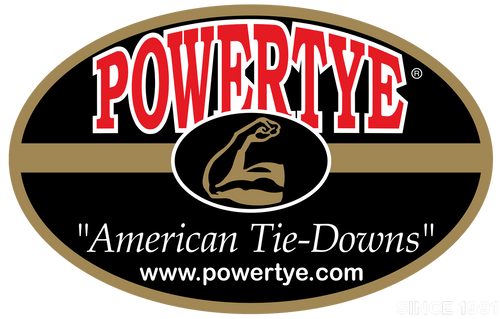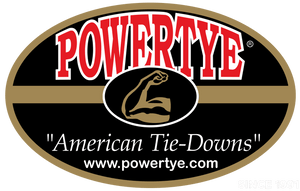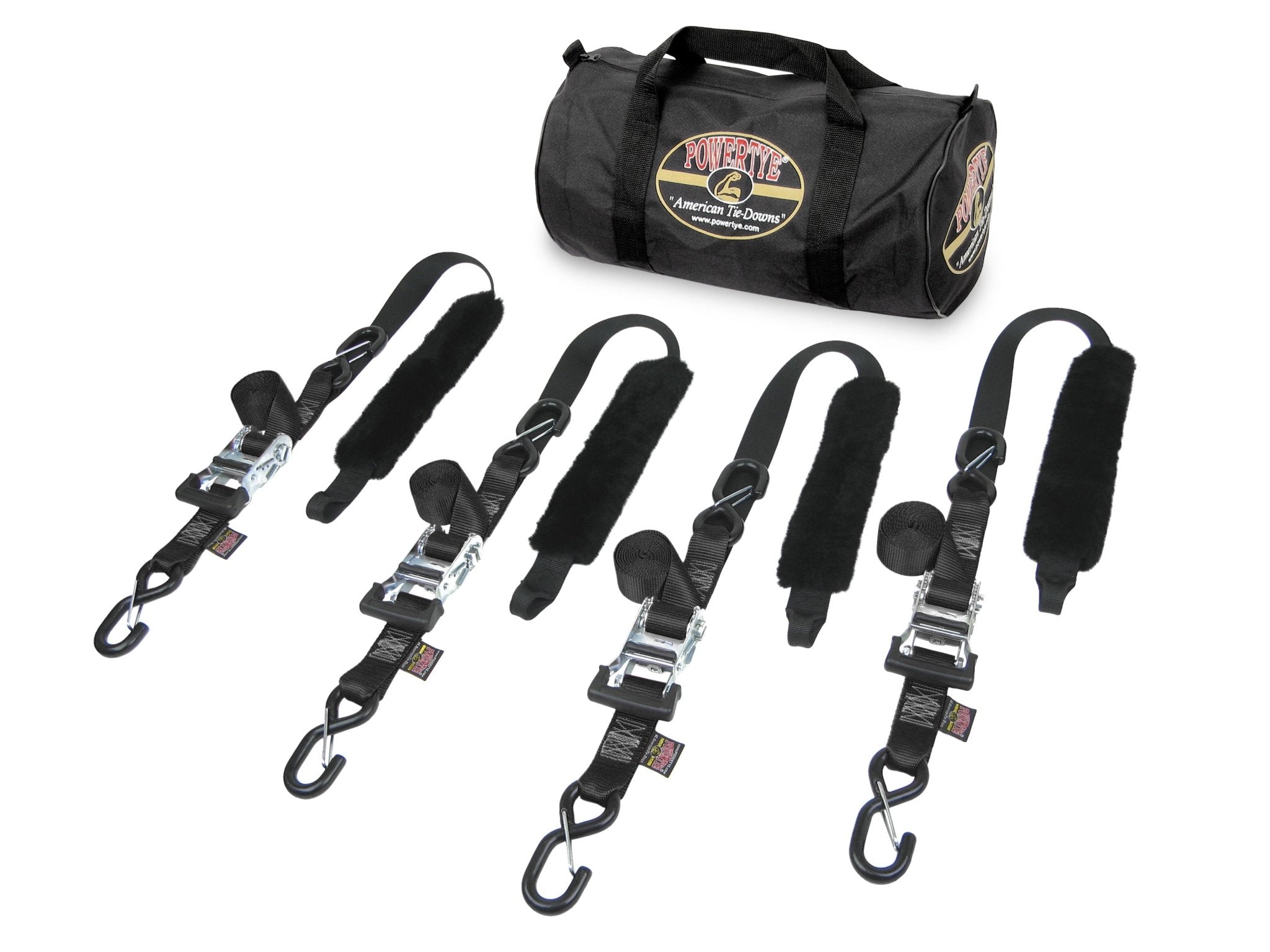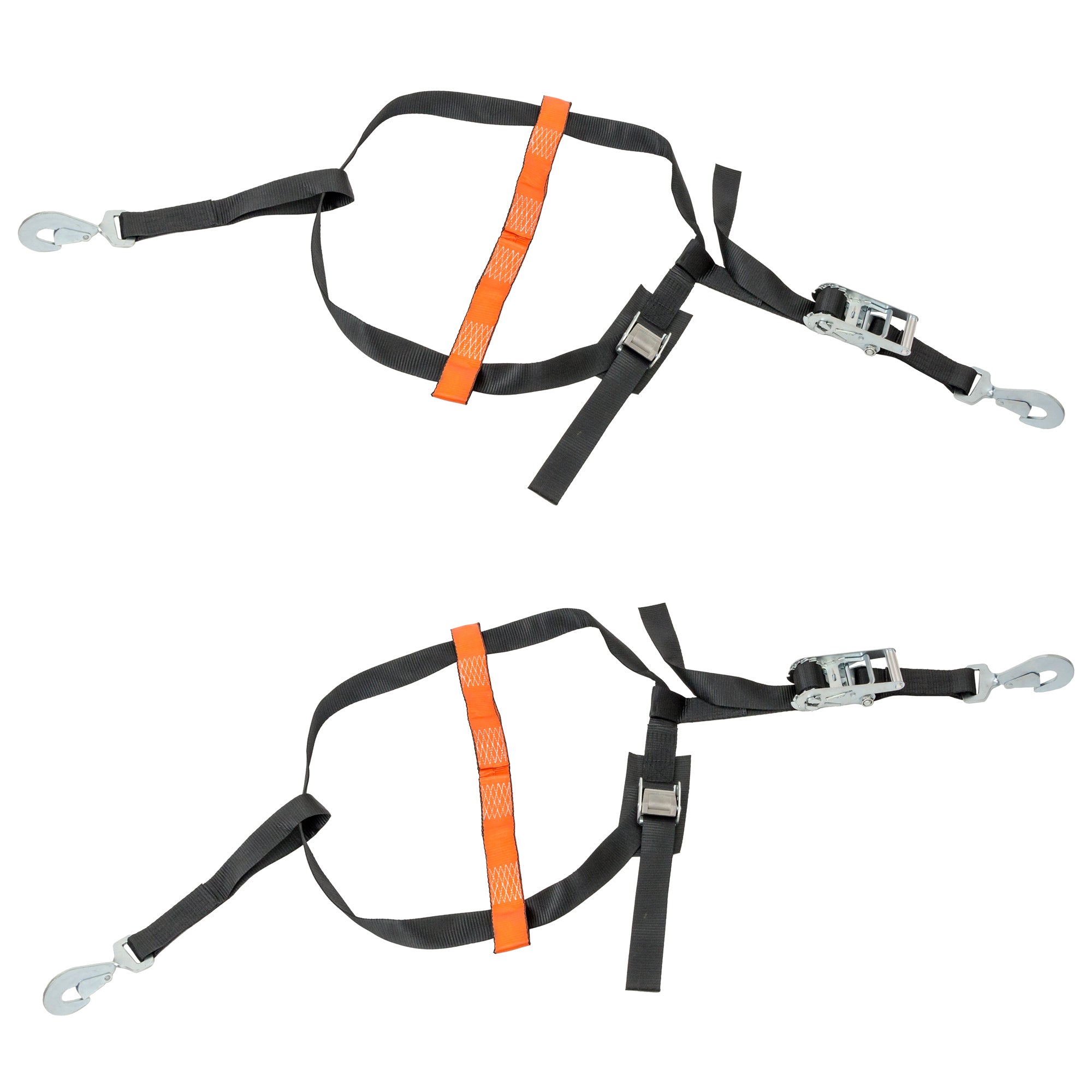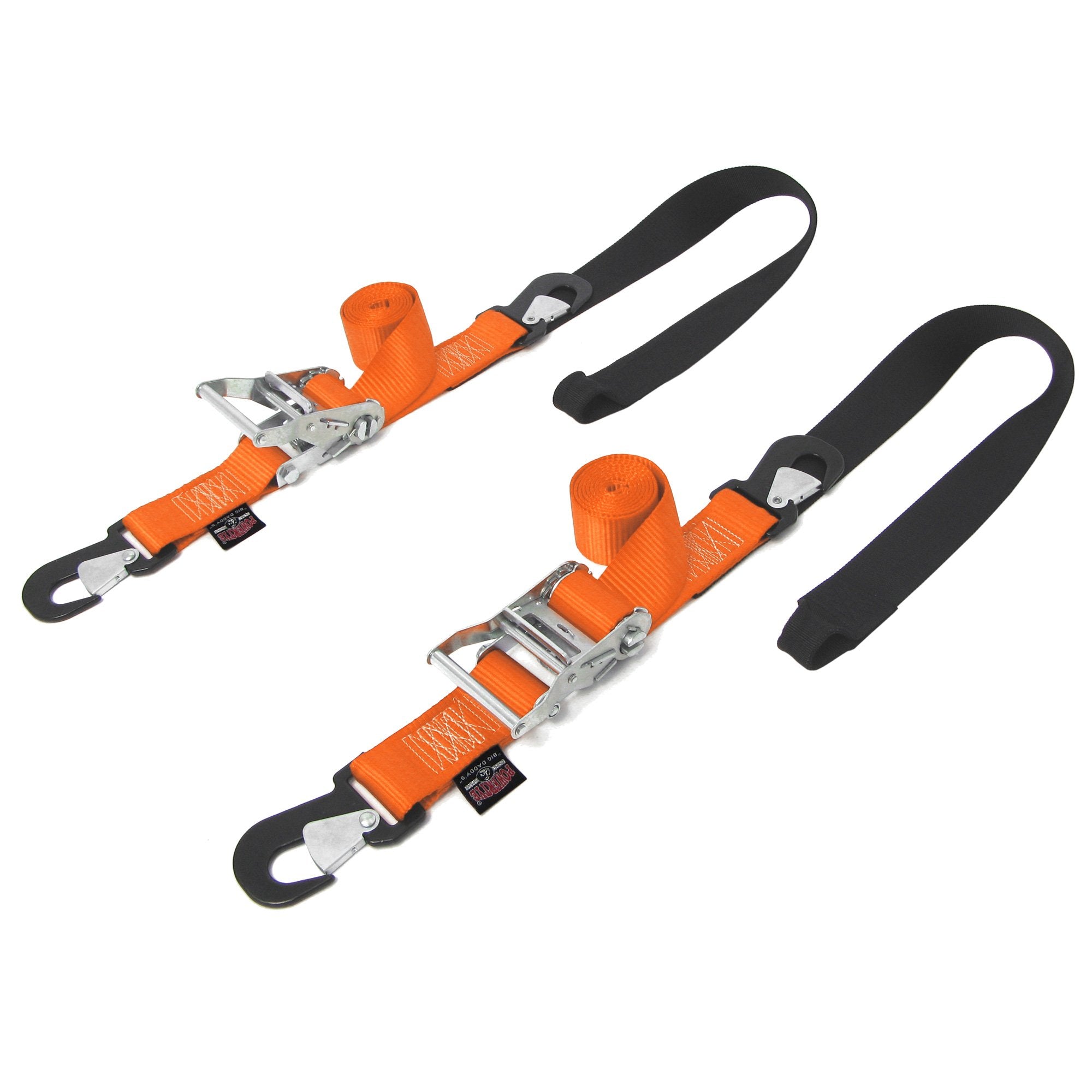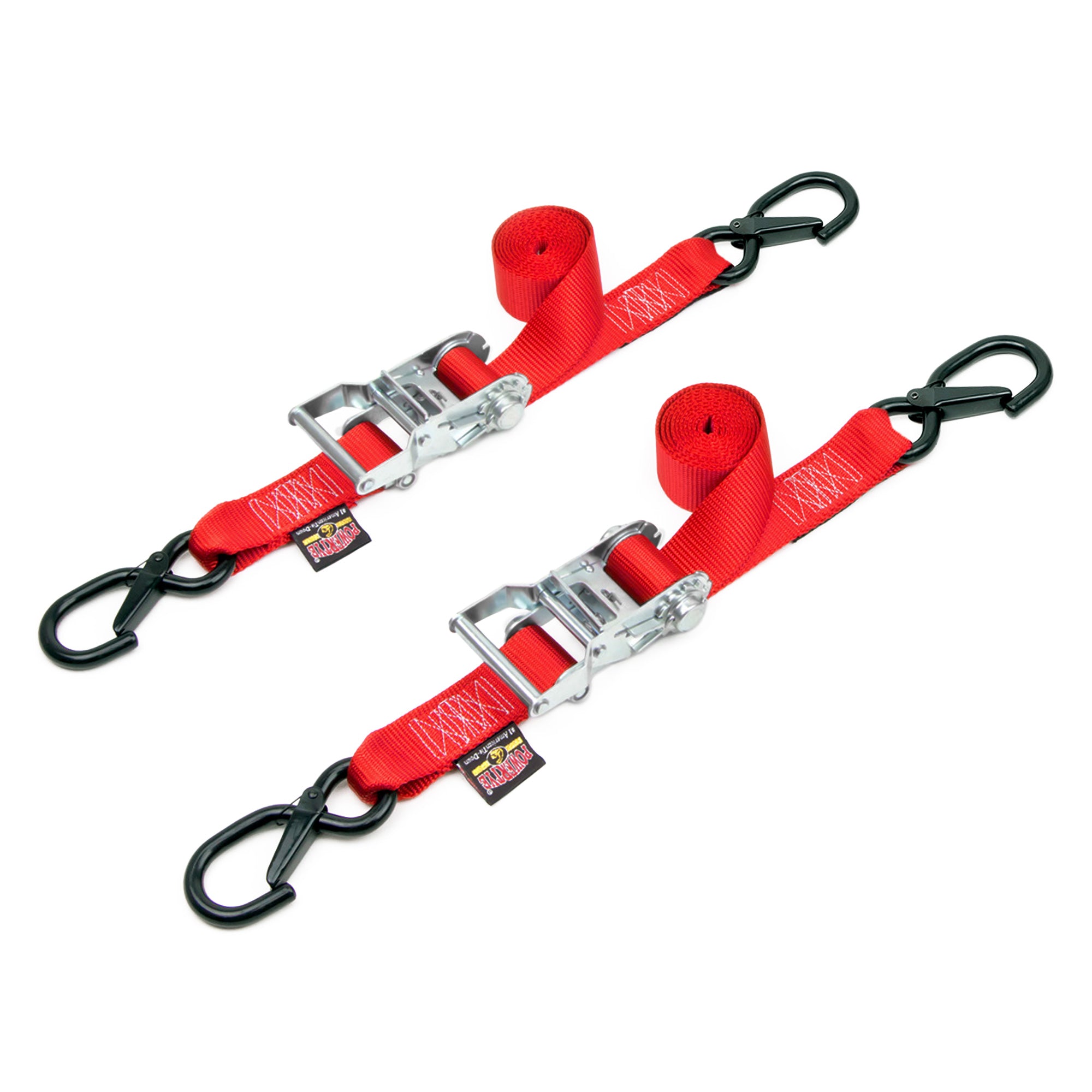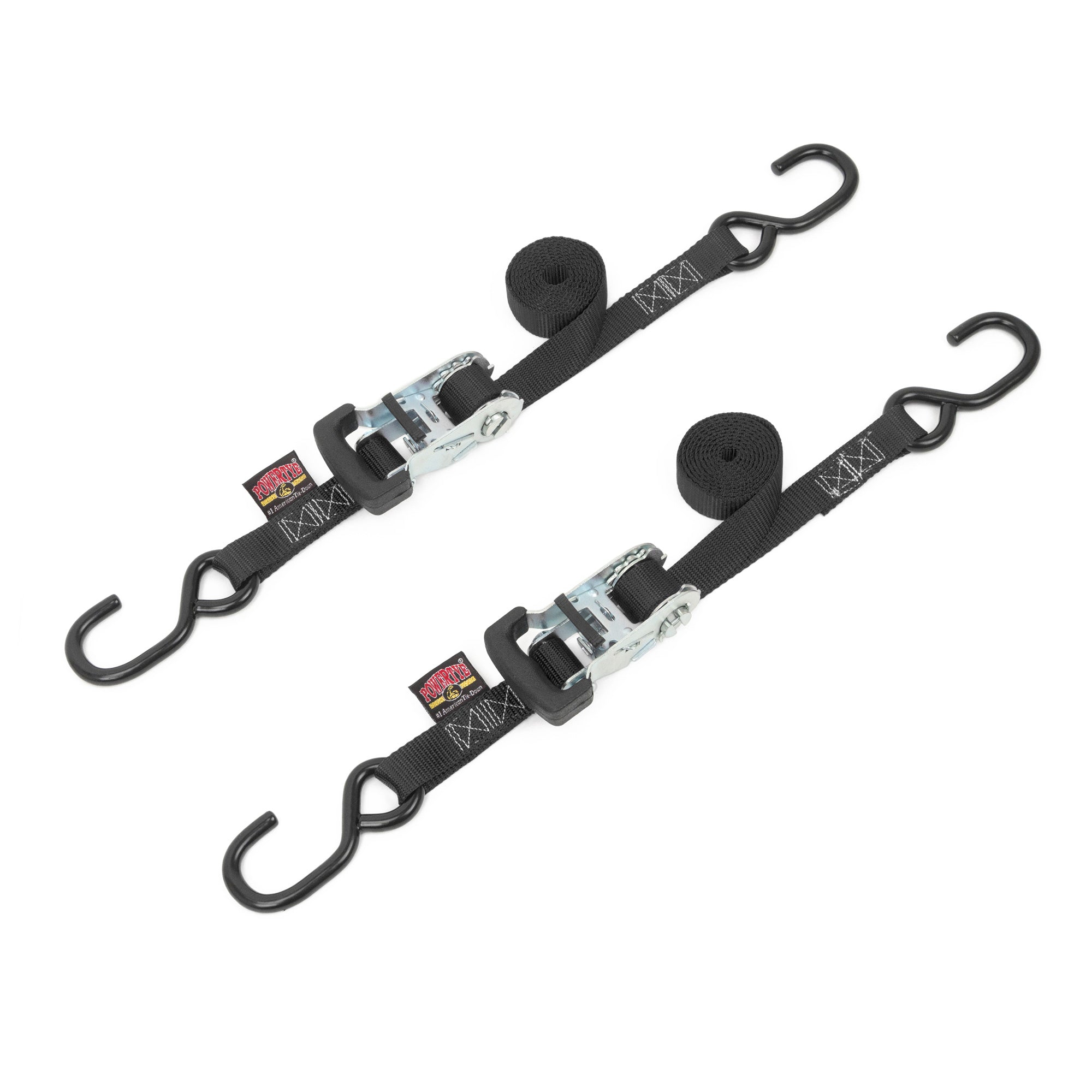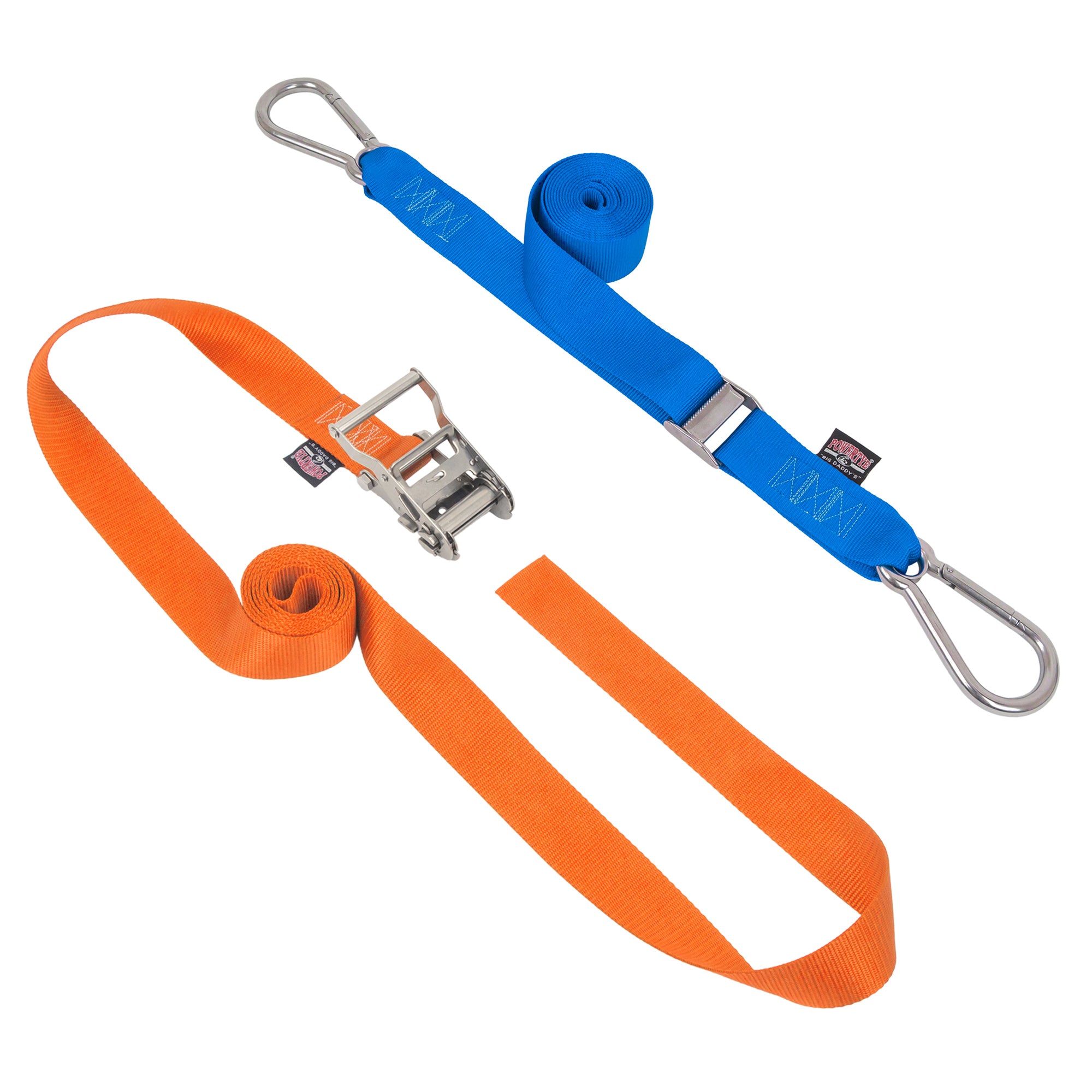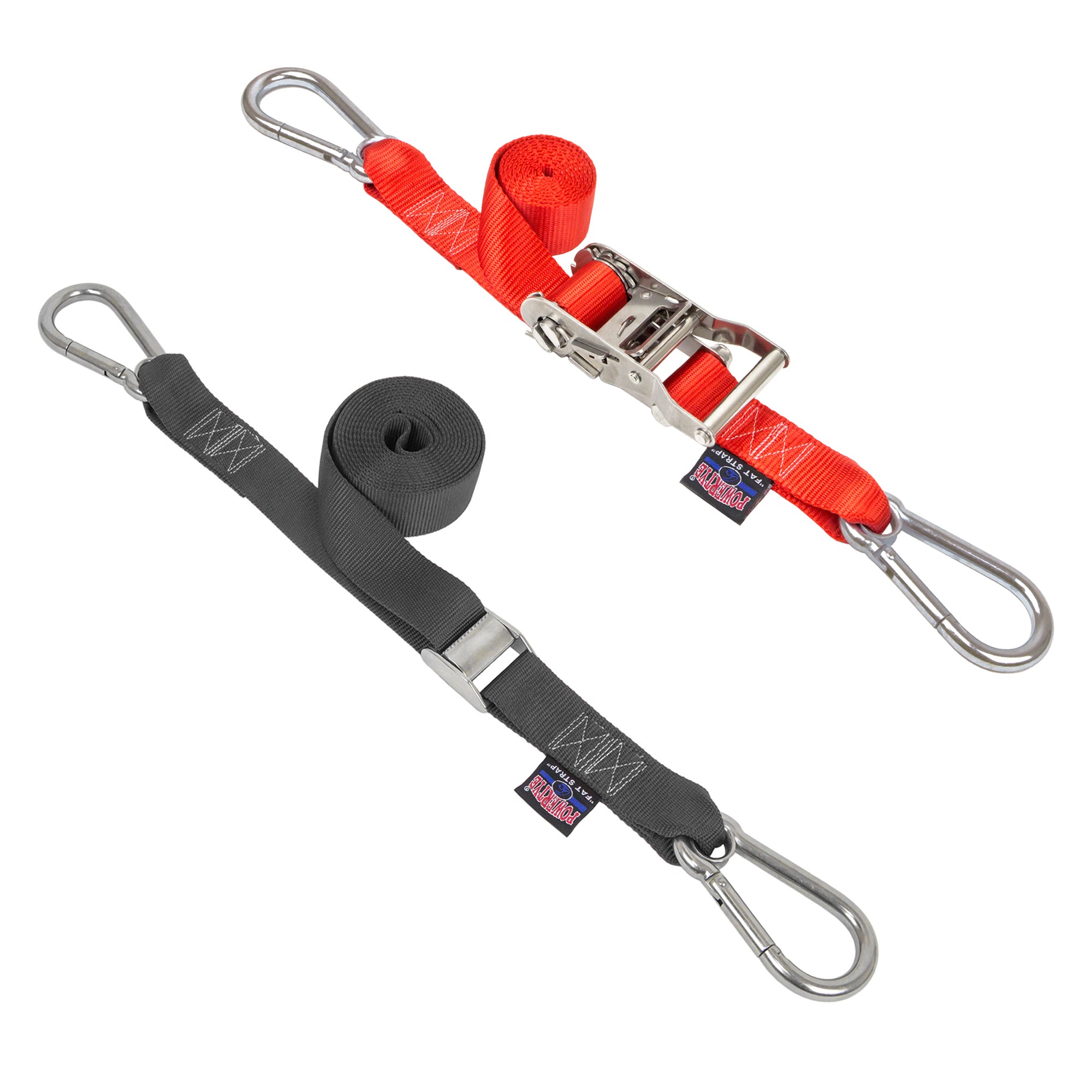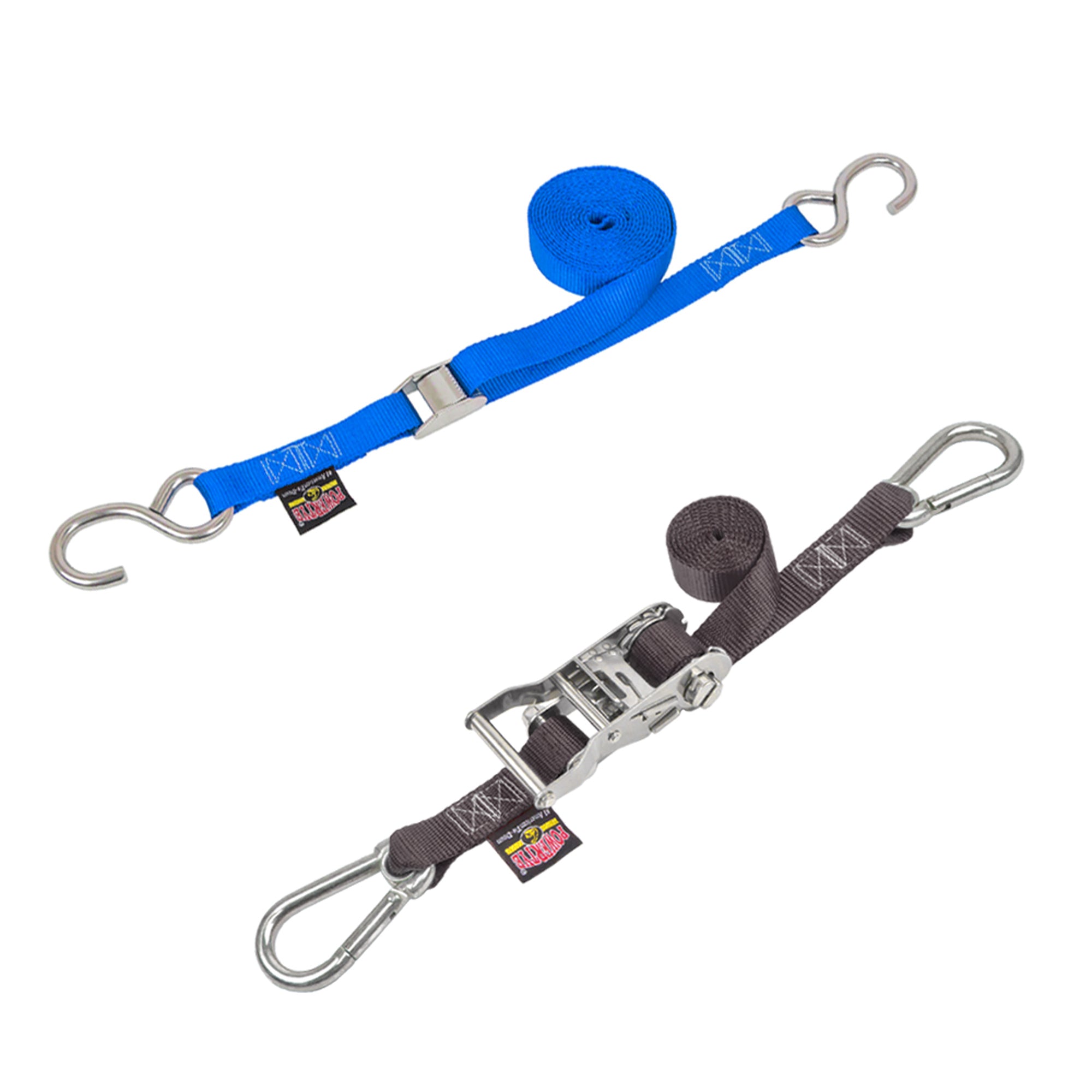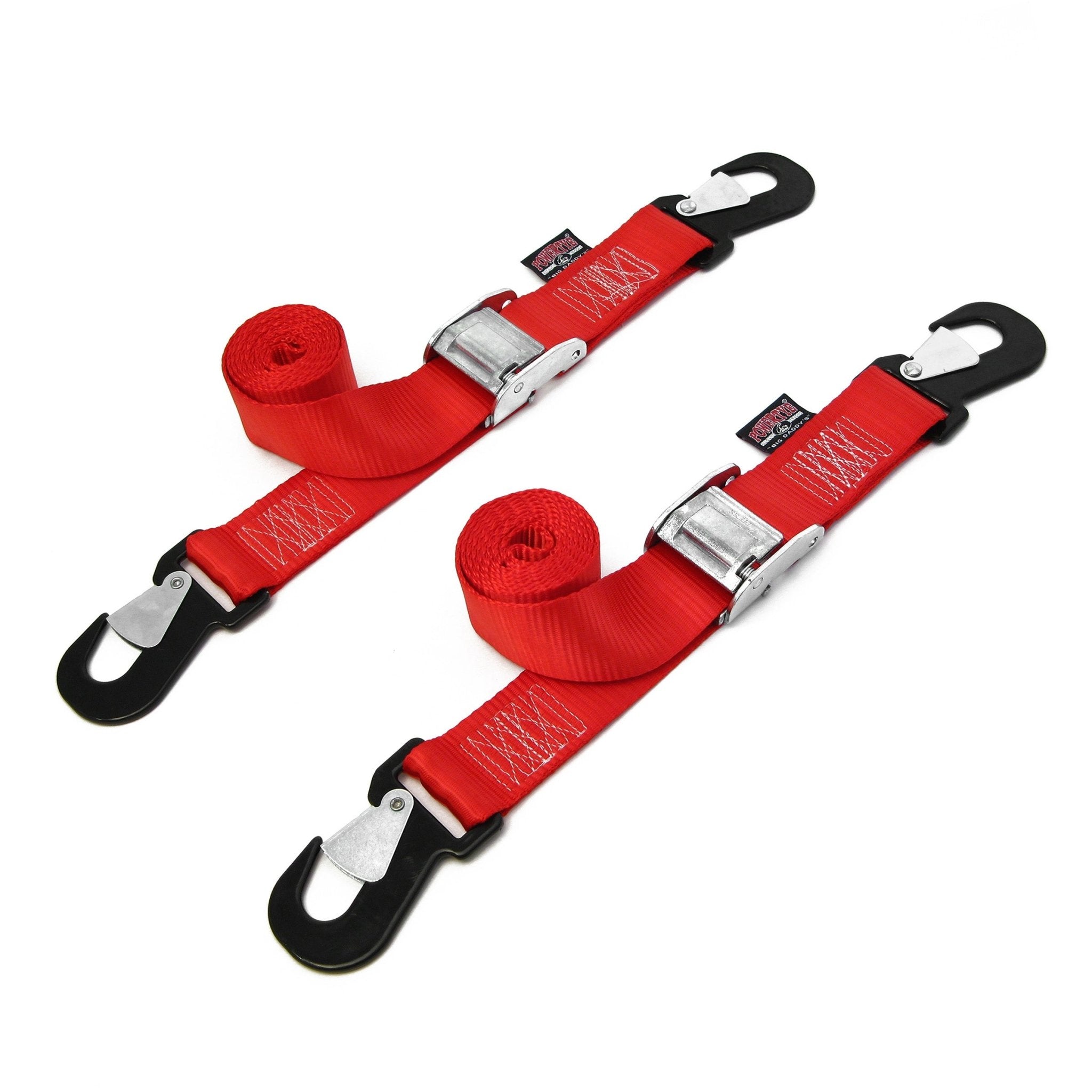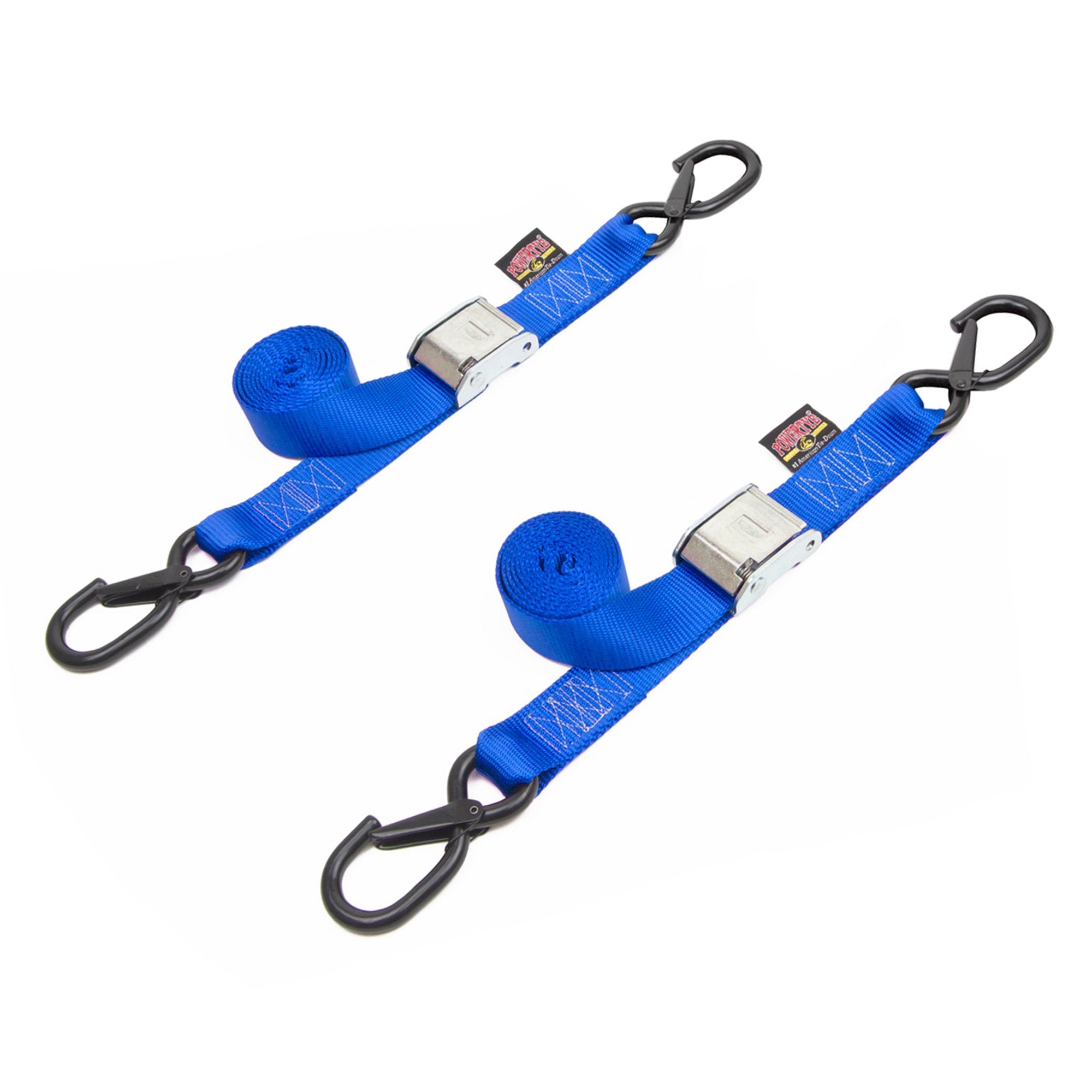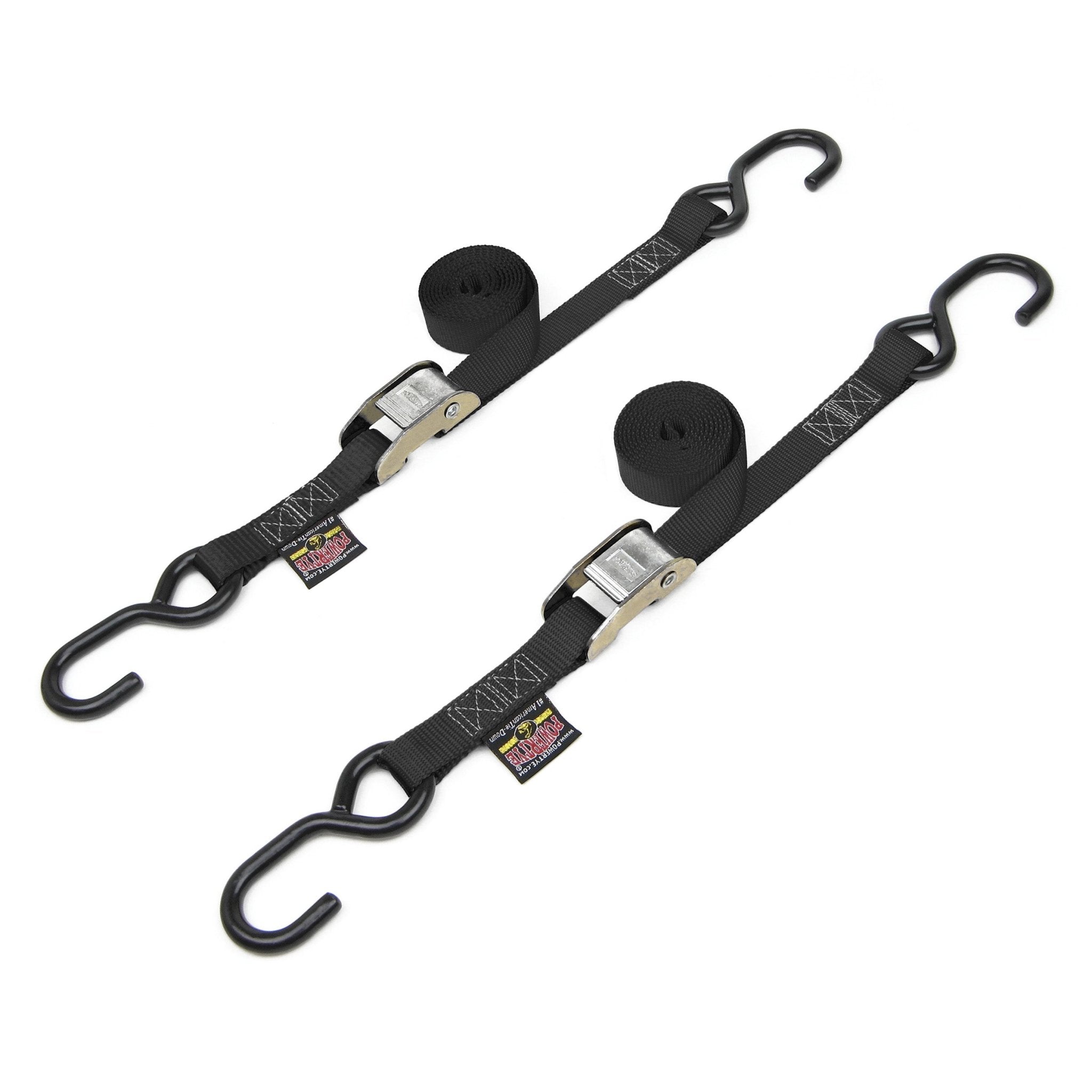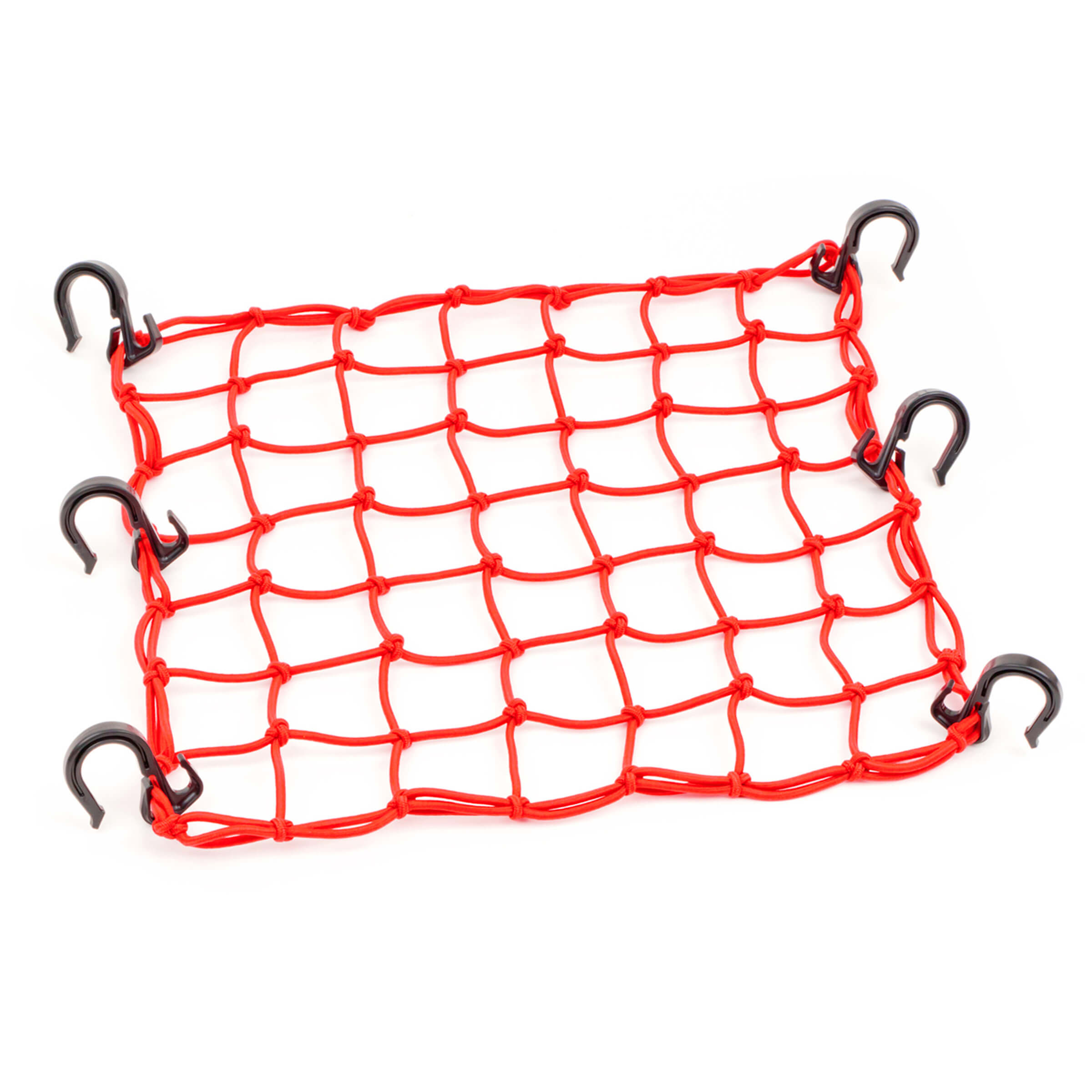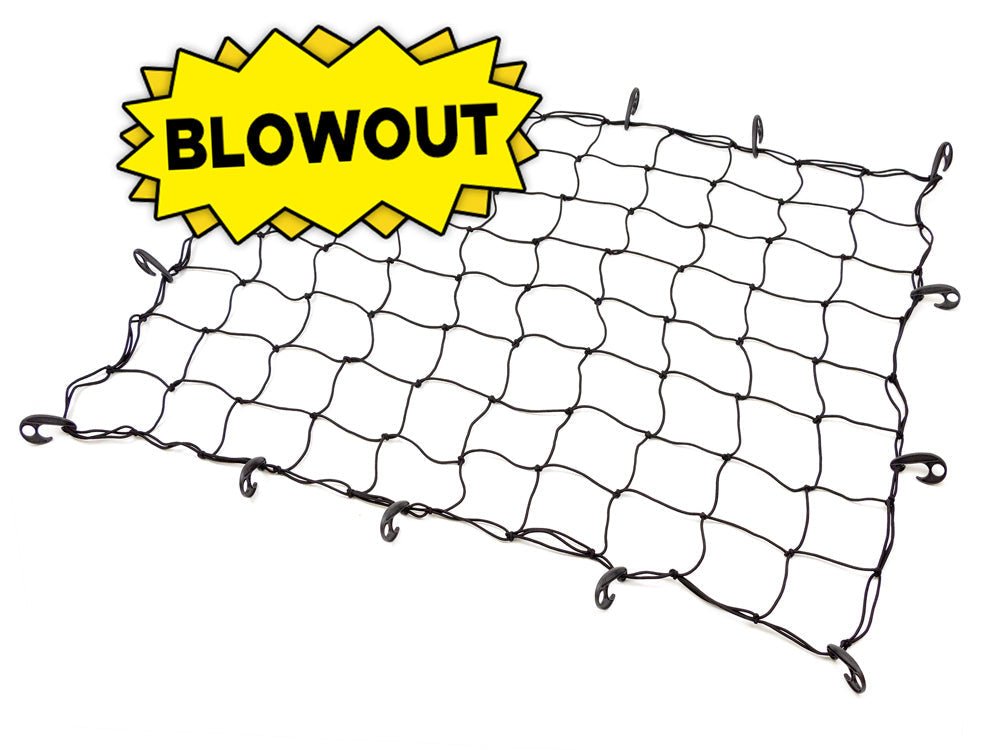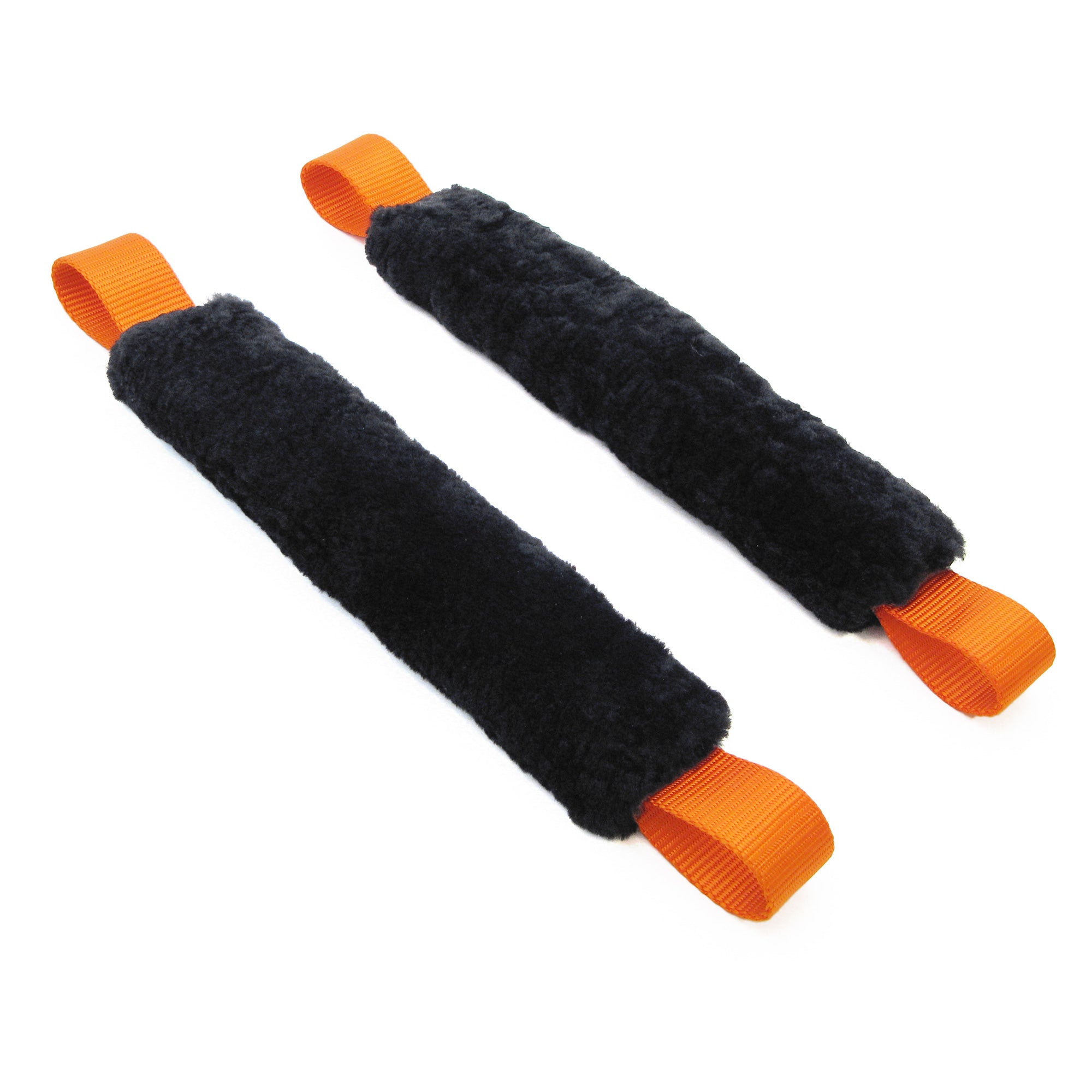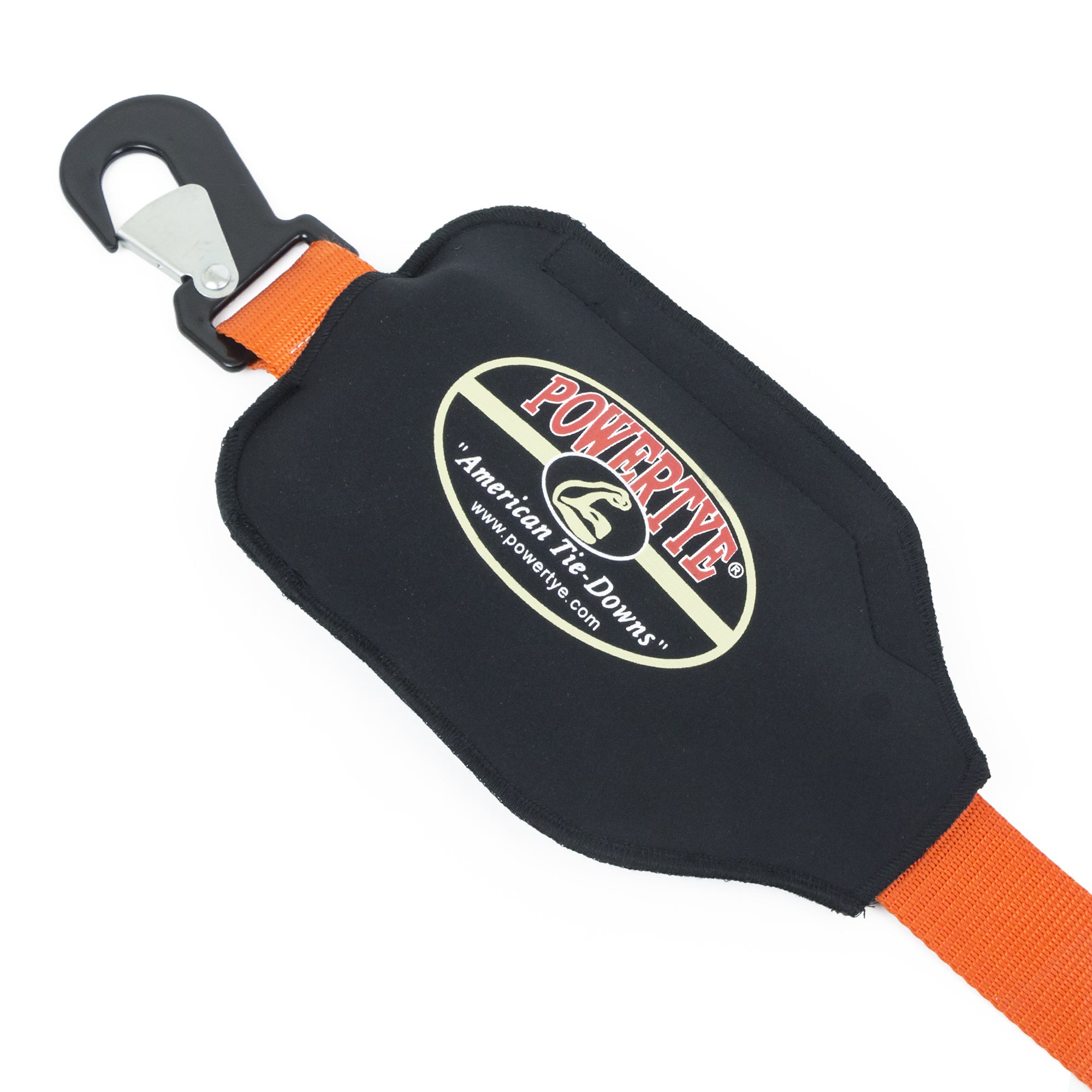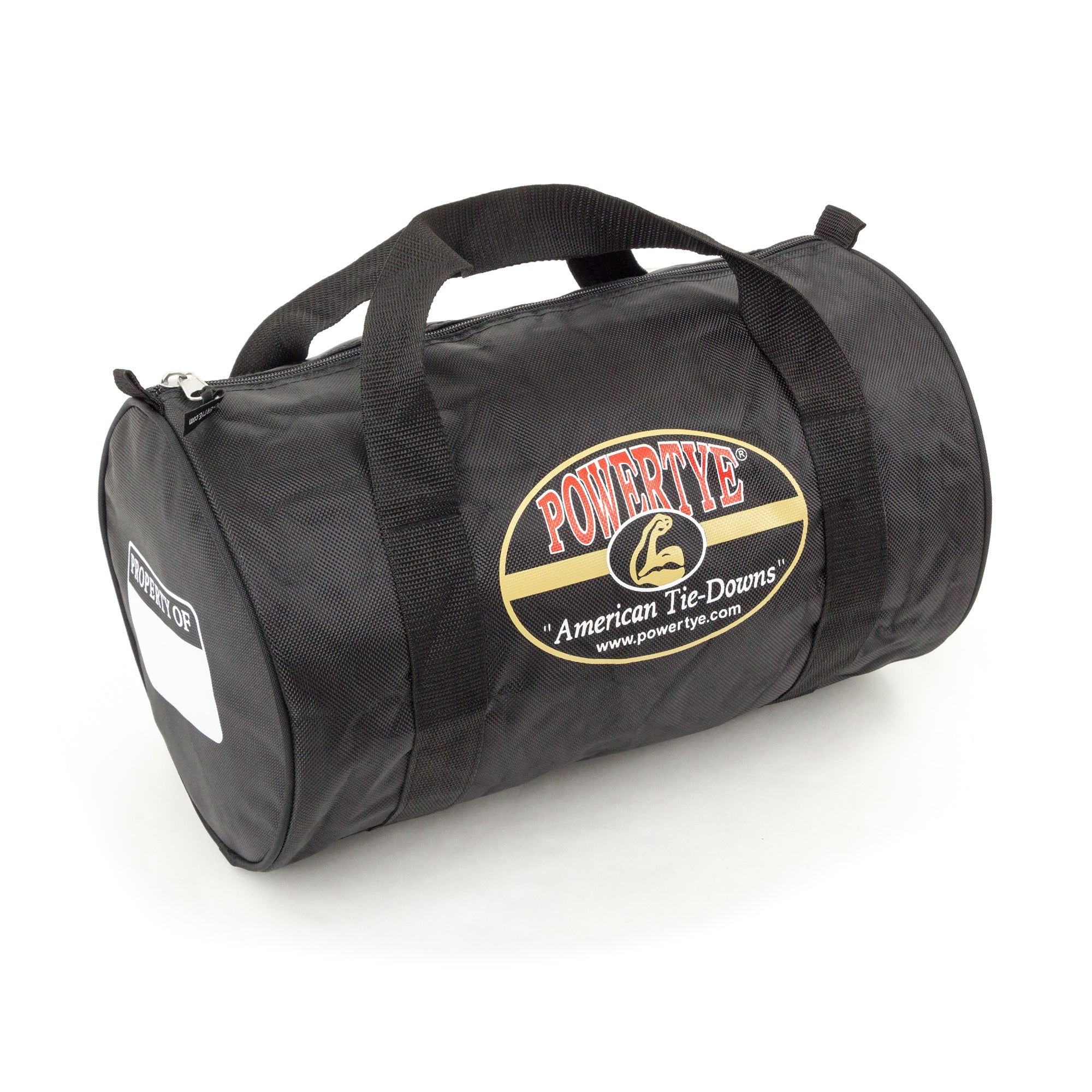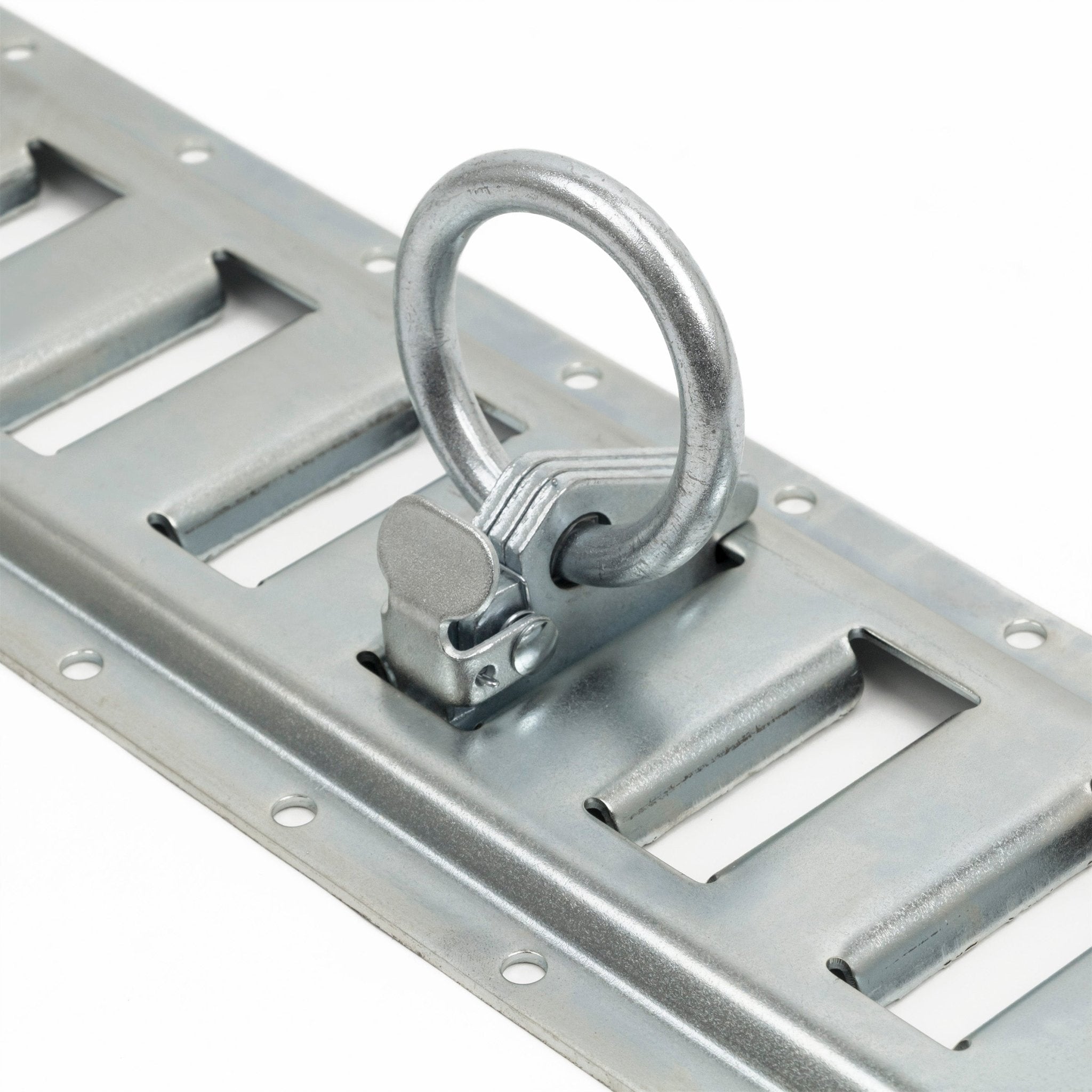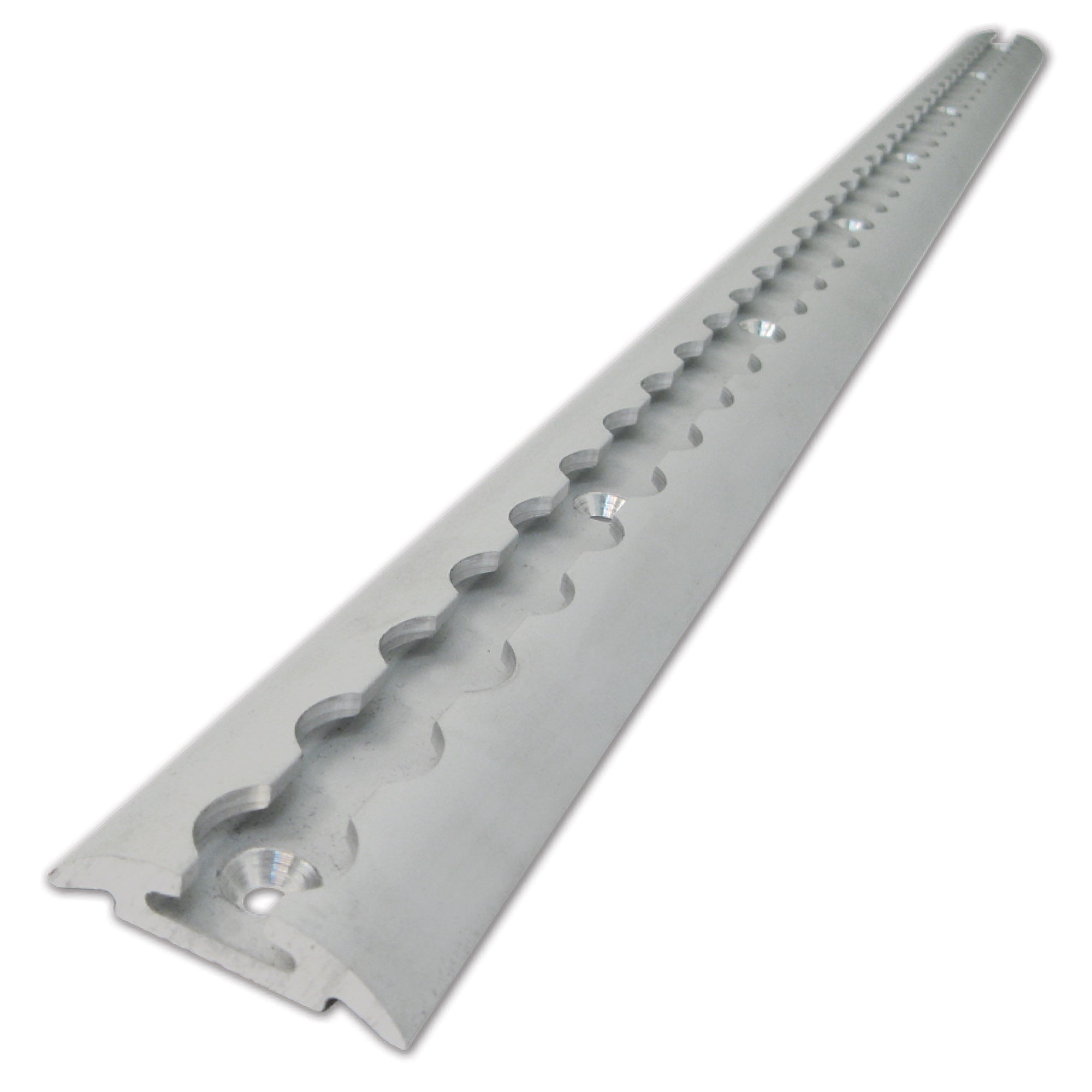Boat Ratchet Straps: Secure Your Boat with Confidence
Trailering a boat isn’t just about horsepower and hitch weight. It’s about safety. And nothing keeps your boat safer on the road than a properly secured set of boat ratchet straps.
If you’re hauling a fishing boat, wakeboard vessel, or pontoon across town — or across state lines — the right ratchet straps can be the difference between smooth transport and serious damage. In this guide, we’ll cover what makes boat ratchet straps different, how to use them properly, and what to look for when buying your next set.

What Are Boat Ratchet Straps?
Boat ratchet straps are heavy-duty tie-down straps designed specifically to secure boats to trailers. They use a ratcheting mechanism to create tension and lock the strap in place, keeping your vessel from shifting, bouncing, or lifting during transport.
While standard ratchet straps might get the job done, true marine-grade boat ratchet straps are built to withstand harsh conditions like saltwater exposure, UV rays, and constant tension under motion.
These aren’t your everyday hardware store tie-downs. These are purpose-built for boaters who demand serious reliability.
Why Use Ratchet Straps for Boats?
You may be wondering — why ratchet straps over cam buckles or ropes?
Here’s why ratchet straps are often the top choice for boat transport:
- Higher tension strength — Ratchet straps apply more force than hand-tightened options
- No slippage — Once locked, they don’t loosen during transit
- Control — You can dial in precise tension without over-tightening
- Ideal for heavy or long-distance hauling
- Durable under repeated use and vibration
If you're hauling a larger boat, driving long distances, or going over bumpy roads, ratchet straps are the gold standard for keeping your load stable.
Key Features of High-Quality Boat Ratchet Straps
Not all ratchet straps are created equal. When it comes to marine use, here are the features that matter most:
1. Marine-Grade Webbing
The webbing — or the strap material — should be made of high-strength polyester that resists:
- UV rays
- Mold and mildew
- Salt and freshwater exposure
- Abrasion from contact with hulls or trailer parts
Look for tight, dense weave patterns and reinforced stitching.
2. Heavy-Duty Ratchet Mechanism
The ratchet should feel solid in your hand, with smooth gear engagement and a secure locking pawl. Cheap ratchets can jam, rust, or even break under stress. Boat ratchet straps use coated, corrosion-resistant metals for longevity.
3. Protective End Hardware
S-hooks, J-hooks, or flat hooks should be vinyl-coated or rubberized to prevent scratching your boat or trailer. They must be rated for the strap’s full load capacity and fit easily into standard trailer anchor points.
4. Soft-Tye Options
Soft-tye extensions or integrated soft-tye loops allow you to secure the strap around sensitive areas — like a polished transom or chrome rail — without introducing metal-on-metal contact. This is especially useful when strapping down the stern or bow where gelcoat damage is a concern.
5. Working Load Limit (WLL) and Breaking Strength
Always check the WLL rating. For marine use, you want a strap that:
- Has a WLL that meets or exceeds your boat’s weight needs
- Offers a breaking strength several times higher for safety margin
- Includes WLL tags printed or sewn into the strap
How to Use Boat Ratchet Straps Properly
Improper use of ratchet straps can lead to gear failure, damage, or even accidents. Here’s a step-by-step guide to secure your boat correctly:

Step 1: Position the Boat on the Trailer
Make sure the boat is centered and aligned properly on the trailer bunks or rollers. The bow should sit snug against the bow stop or roller. If it’s misaligned, straps won’t help.
Step 2: Identify Tie-Down Points
Use:
- Transom eyelets on the rear of the boat
- Bow eye at the front
- Trailer frame anchors or loops
Avoid wrapping straps around fragile hardware, hoses, or trim components.
Step 3: Hook the Strap to the Trailer Frame
Secure one end of the ratchet strap to a solid anchor point on the trailer frame, behind or below the boat’s hull. If using a soft-tye, wrap it around a handle or rail first, then hook into it.
Step 4: Loop and Attach to the Boat
Guide the strap up to the boat's attachment point (usually a transom eye or bow eye) and hook in. The strap should run diagonally at roughly a 30-45° angle for maximum stability.
Step 5: Tighten the Ratchet
Feed the strap through the ratchet and start cranking. Apply steady force until the strap is taut but not crushing. If the hull starts to compress or bend, back off slightly.
The ratchet should lock in place after the final crank. Always double-check that the teeth are engaged and holding firm.
Step 6: Secure Loose Ends
Wrap or tie off any leftover strap tail. Flapping ends can fray at highway speeds or come loose. Use integrated Velcro keepers or roll and tuck the strap under itself.
Step 7: Final Walkaround
Give the boat a good shake at both the bow and stern. It should feel completely planted on the trailer, with no bounce, tilt, or sway.
Best Practices for Boat Ratchet Strap Safety
- Check WLL before every trip
- Inspect for fraying, mildew, or rust
- Tighten evenly on both sides of the transom
- Avoid crossing straps unless necessary for stability
- Use bow, transom, and gunwale straps for full coverage
- Replace any damaged parts immediately
- Never use knots or makeshift tensioners
Boat tie-downs are not the place to take chances. A failed strap on the highway is a safety hazard for you and everyone around you.
When to Use Ratchet Straps Over Cam Buckles
Both ratchet and cam buckle straps have their place. Here’s when ratchet straps are the better choice:
- Larger boats or longer trailers
- Heavier hulls that need higher tension
- Extended highway travel
- Driving over hills, curves, or off-road terrain
- Securing sterns with lots of bounce potential
- Hauling in bad weather (rain, wind, snow)
Ratchet straps provide maximum grip and force, making them ideal for these demanding conditions.
Use Cases for Boat Ratchet Straps
🛥️ Bass Boat Hauling
Bass boats are low-profile but fast and heavy. Ratchet straps secure the hull to the trailer during high-speed trips to tournaments or remote lakes.
🏝️ Pontoon Transport
Pontoon boats have unique geometry and can shift more easily due to their dual-float design. Ratchet straps hold the craft in place from both sides and the bow.
🚤 Wakeboard & Ski Boats
These boats often have towers and accessories that add height and weight. Ratchet tie-downs keep everything locked in, especially when traveling with gear on board.
⚓ Saltwater Fishing Boats
Salt exposure requires marine-grade materials. High-quality ratchet straps built for boat use resist corrosion and UV damage.
🔧 Maintenance and Storage
Even when parked or stored on the trailer, ratchet straps can hold a boat in place during storms or in shared storage facilities.
Maintenance Tips for Long-Lasting Ratchet Straps
Want your straps to last season after season? Follow these simple care tips:
- Rinse after saltwater use
- Hang to dry before storing
- Store in a cool, dry place away from direct sunlight
- Avoid knots, cuts, or pinching in ratchet gears
- Apply light silicone spray to ratchet gears (never oil)
- Replace faded, brittle, or torn straps immediately
Keeping your ratchet straps in peak condition is just as important as maintaining your boat or trailer.
What Makes PowerTye Boat Ratchet Straps Different?
At PowerTye, we’ve been building premium tie-downs since 1991 — and we know boats.
Our boat ratchet straps feature:
- Made-in-USA webbing and ratchet components
- Industrial-grade polyester with high UV and water resistance
- Heavy-duty ratchet mechanisms that hold strong without slipping
- Soft-Tye options to protect your boat’s finish
- Precision sewing and WLL tags for reliable performance
We design and test our straps to stand up to real-world abuse — not just showroom specs.
When you're on the road with your boat in tow, you want the kind of confidence that only comes from experience. That’s what we build into every strap.
Final Thoughts
Boat ratchet straps aren’t just a helpful accessory — they’re a critical part of your trailering setup. Whether you're hauling a 14-foot skiff or a 24-foot wake machine, properly securing your boat with ratchet straps protects your investment, your safety, and everyone else on the road.
The key points to remember:
- Use marine-grade ratchet straps built for boat use
- Secure all tie-down points: bow, transom, and midship if needed
- Check tension before every trip
- Replace damaged or worn straps — no exceptions
- Maintain your gear like you maintain your boat
When done right, strapping your boat becomes second nature — and your boat arrives looking just like it did when you loaded it up.
